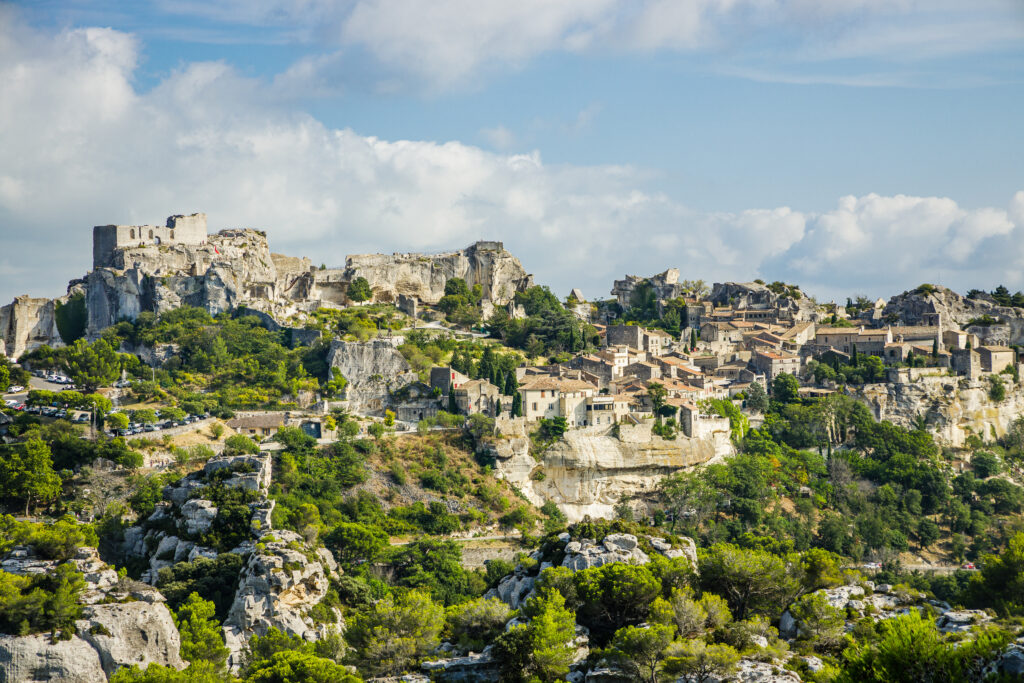
Listed as one of France's most beautiful villages, Les Beaux-de-Provence is an unmissable stopover during a stay in the Bouches-du-Rhône region. Situated in the Alpilles mountains, perched on a rocky outcrop, this village exudes a profound harmony between old stones and the surrounding nature. From alleyways to museums, passing by the commune's most beautiful buildings, a visit to Les Beaux-de-Provence will leave a lasting impression. It's a meeting place for the heritage, culture, art, traditions and great scents of Provence. Here are the 11 must-sees.
1. What to visit in Les Baux-de-Provence? Saint-Vincent church, partly troglodytic
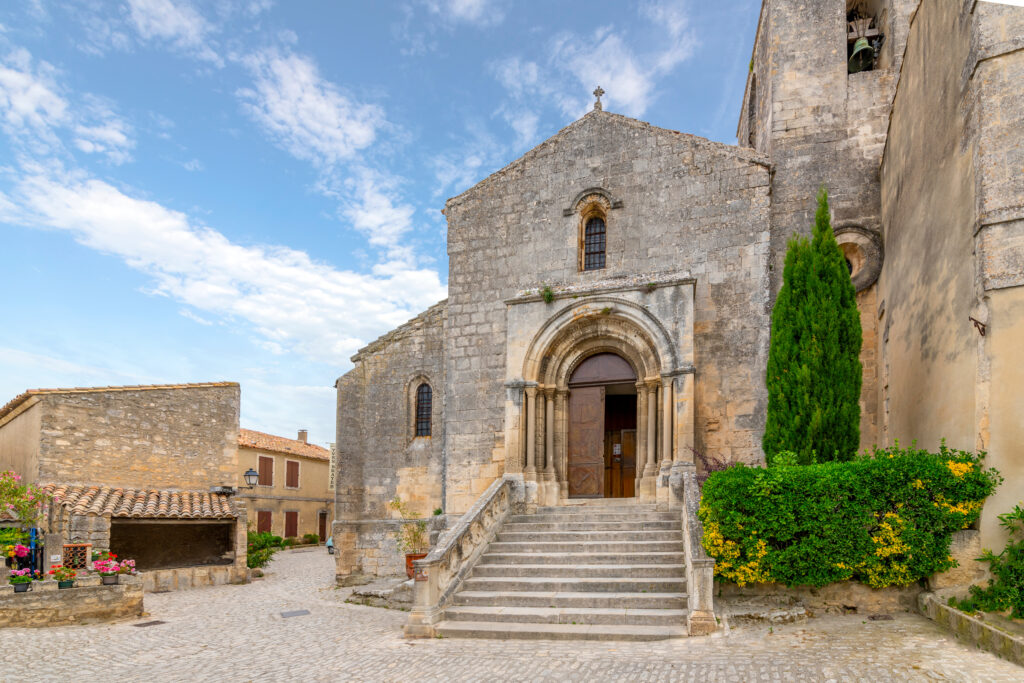
Built between the 12th and 16th centuries, theChurch of Saint-Vincent is partly carved out of the rock. Once you've taken the time to contemplate its exterior features, head inside to see, among other splendors, the funerary chapel of the de Manville family, with its flamboyant Gothic vault, and Max Ingrand's modern stained-glass windows, donated to the commune by Prince Rainier III of Monaco. Once back on the Place Saint-Vincent, take in the superb panorama of the surrounding area, with the Val d'Enfer, the Vallon de la Fontaine and the Provencal countryside in your sights.
2. Château des Baux-de-Provence, a majestic medieval site
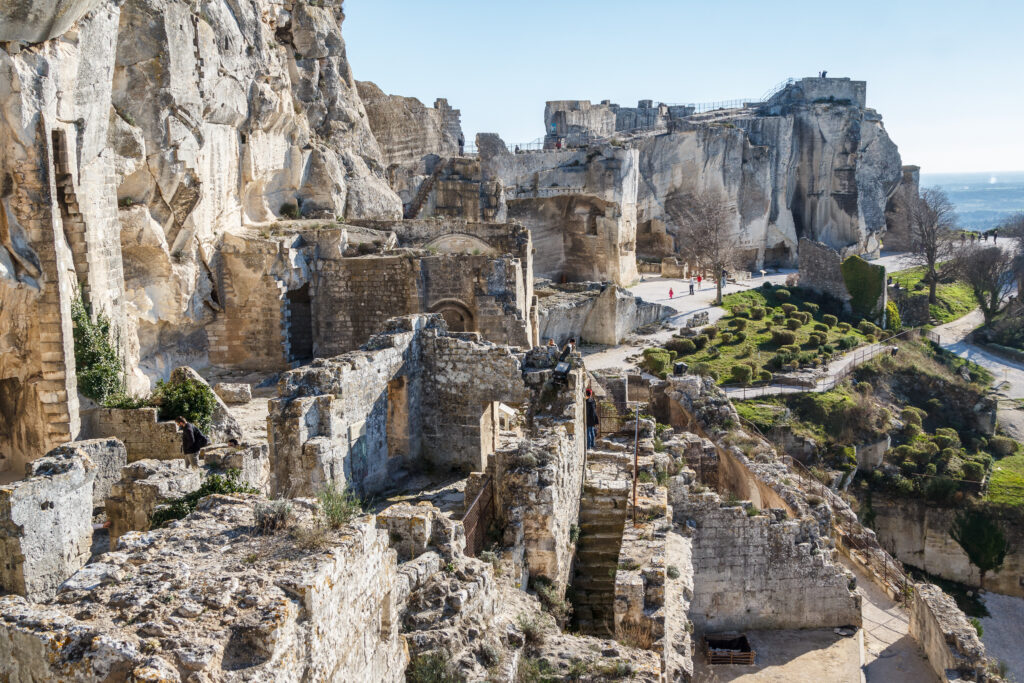
One of the 10 most beautiful villages in the south of France, the Château des Baux-de-Provence, a listed historic monument, crowns the rocky spur. It's easy to see that this strategic position was used to watch over the surrounding area and protect against attack. Covering an area of 5 hectares, the visit includes numerous remains, part of the enclosure, the gates and a former chapel. If this visit is a must, it's also because the fortress is a formidable belvedere revealing breathtaking views over the Provencal countryside, and even over the Camargue and Mont Sainte-Victoret on a clear day.
3. What to visit in Les Baux-de-Provence? The Porte d'Eyguières, a must-see
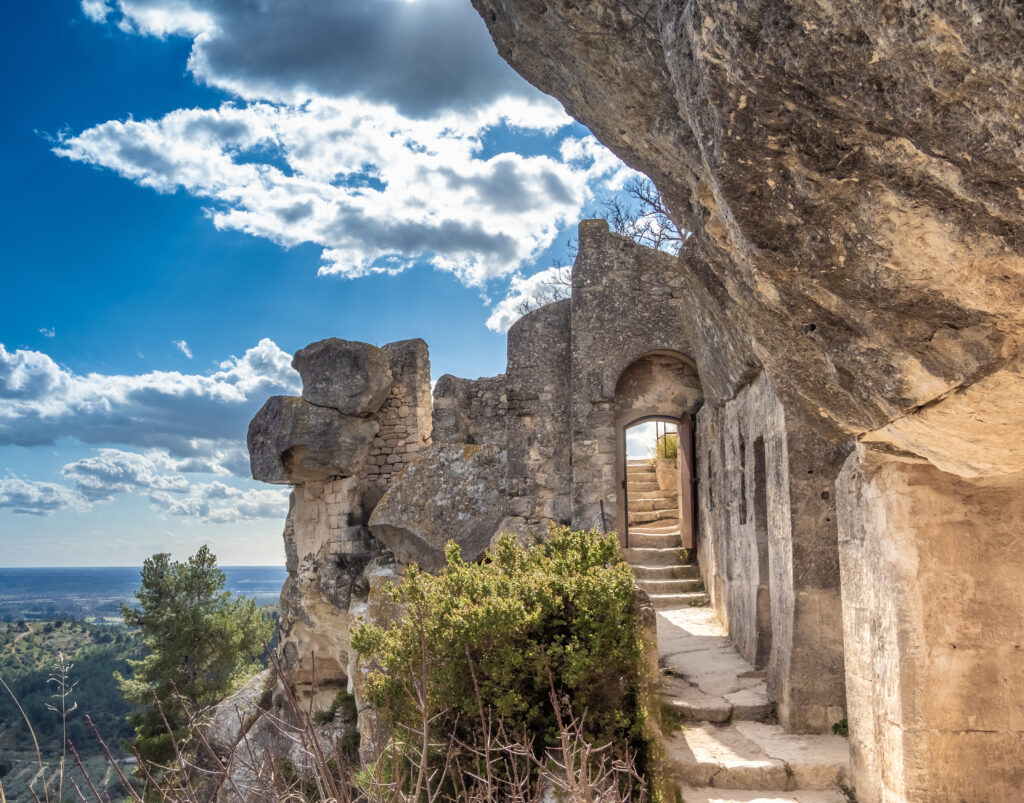
Visitors wishing to access the Vallon de la Fontaine can follow the Chemin de la Calade and pass through the Porte Eyguières, also known as the Porte de l'Eau. It was through this gate that the water for the village's inhabitants arrived. It was the only entrance to the village until 1866. It was rebuilt by the Constable de Montmorency, then raised by the Prince of Monaco in the 18th century, who had received the Barony of Les Baux in 1643. Some elements of the Maison Grimaldi coat of arms can still be seen above the door.
4. The Yves Brayer Museum and its paintings
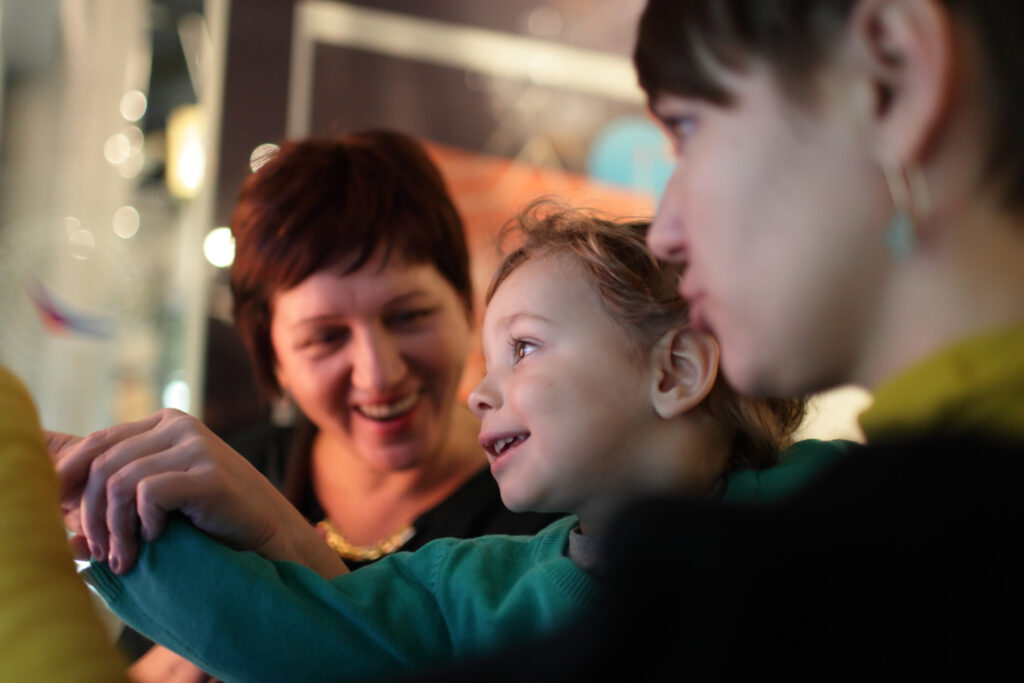
The Musée Yves Brayer occupies the Hôtel de Porcelet, one of the village's most beautiful mansions. Since 1991, it has housed a magnificent retrospective of the work of the painter, who had an unrivalled love of Mediterranean countries. Visitors will recognize landscapes from Spain, Italy and, of course, Provence. Of the region, Yves Brayer was seduced by the limestone ridges overlooking the olive groves, but also by the Camargue and its expanses populated by bulls, birds and horses. The Musée Yves Brayer also boasts a vaulted room decorated with 17th-century frescoes.
5. The Pavillon de la Reine Jeanne, Renaissance splendor
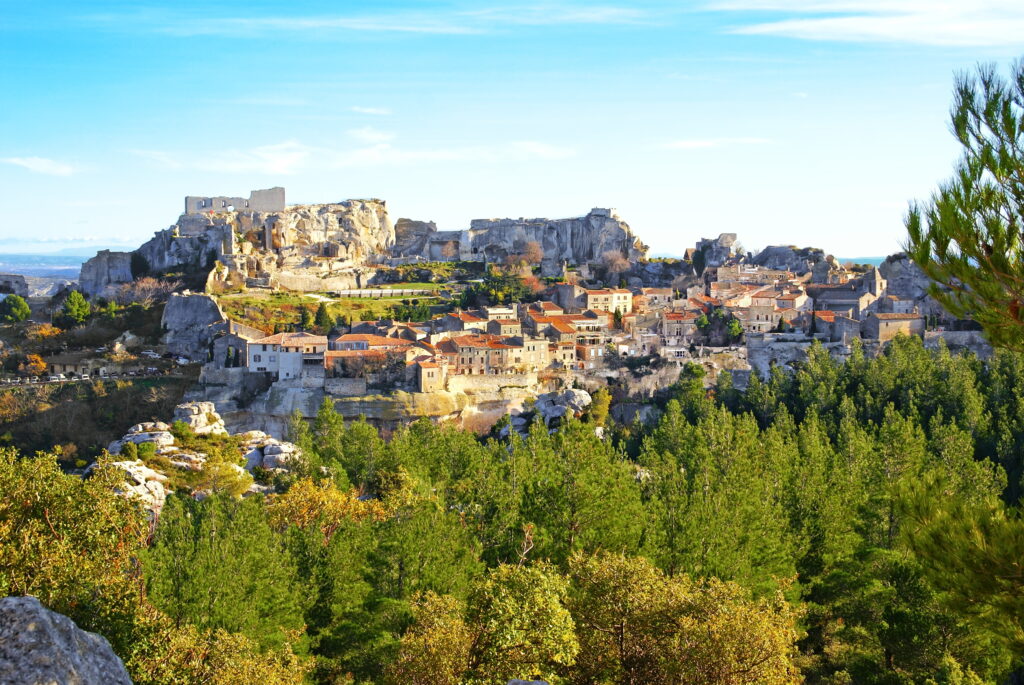
Near the former washhouse, nestled in the Vallon de la Fontaine, visitors discover a sublime Renaissance-style corner pavilion. Visit Pavillon de la Reine Jeanne was built by Jeanne de Quiqueran, wife of Honoré des Martins, Baron des Baux between 1568 and 1581. At the time, it decorated a garden belonging to the des Baux family. Frédéric Mistral, French Provençal writer and lexicographer, made a copy for his tomb in Maillane. The building is well worth a visit to take a few photos.
6. What to visit in Les Baux-de-Provence? The Chapelle des Pénitents Blancs, on the cliffside
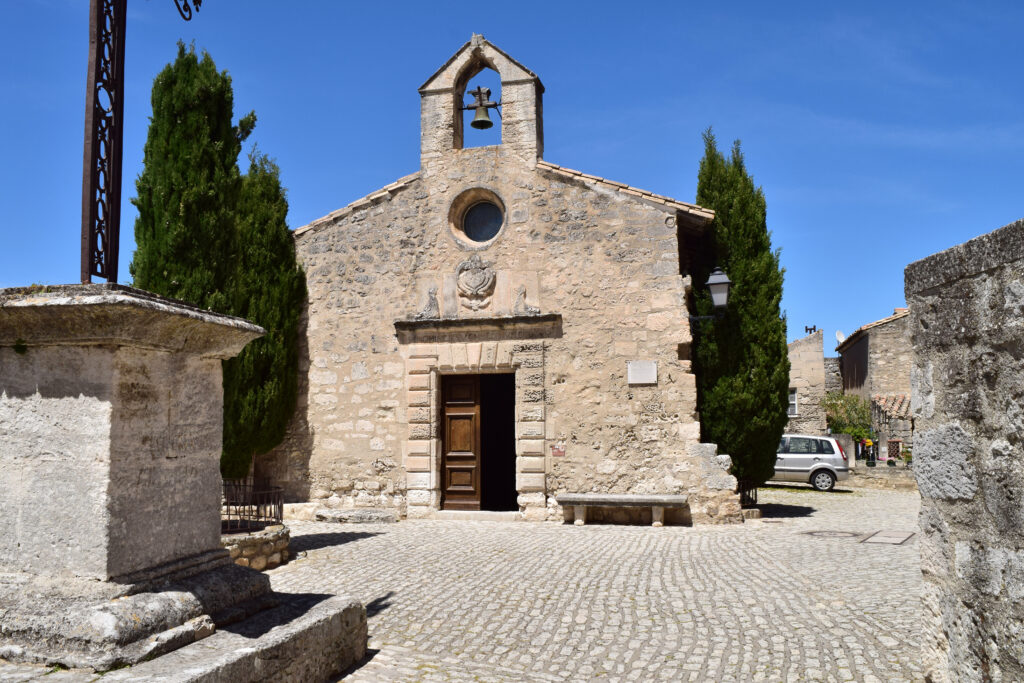
Located on the church square, the Chapelle des Pénitents Blancs was built in the 17th century by the Confrérie des Pénitents Blancs. Gradually falling into disrepair, it was rebuilt by the Confréries de Langue d'Oc in 1937. Once inside, look up to see a bas-relief depicting two kneeling penitents, surmounted by an inscription in stone. Then, inside, it's a pleasure to discover a fresco by Yves Brayer dating from 1974. It depicts the Christmas of the Shepherds in the Provencal tradition. The chapel stands on the edge of a cliff overlooking the Vallon de la Fontaine.
7. The Musée des santons, a leap into tradition
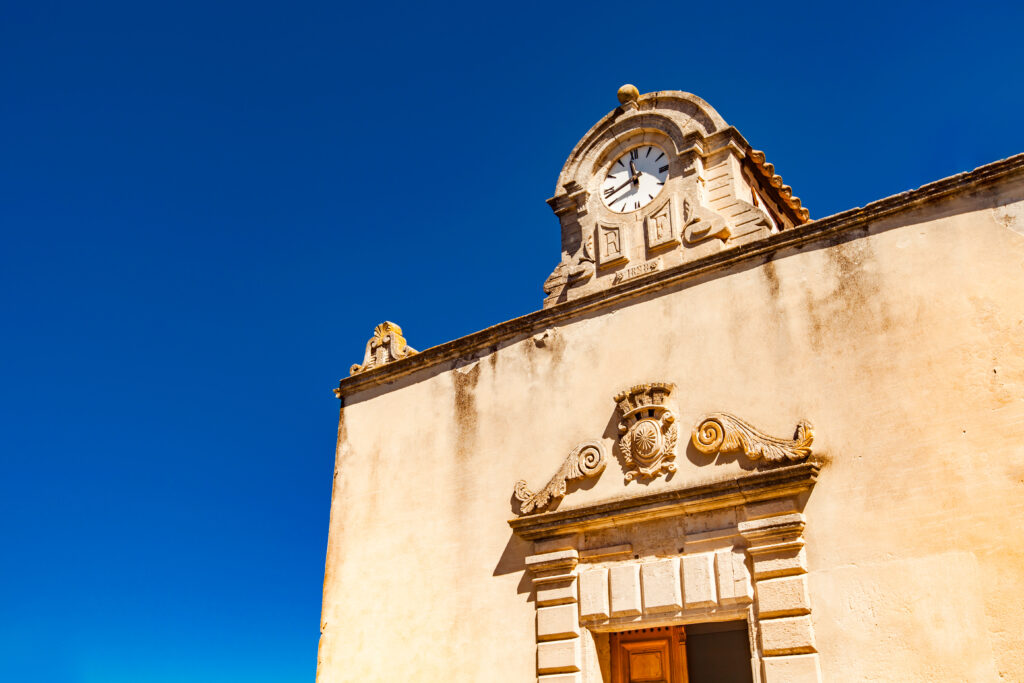
Everyone has heard of the santons of Provence at least once. When you're in Les Baux-de-Provence, a romantic getaway par excellence, a visit to the Musée des santons will allow you to marvel at its diverse collections. There are, of course, numerous santons from Provence, as well as 19th-century church santons from the Carmelite convent in Avignon, and Neapolitan figurines from the 17th and 18th centuries. Also on display are staged scenes, including the traditional ceremony of the offering to the shepherds, and a painting by Antoine Serra depicting midnight mass in Les Baux-de-Provence.
8. Les Carrières des Lumières, an extraordinary experience
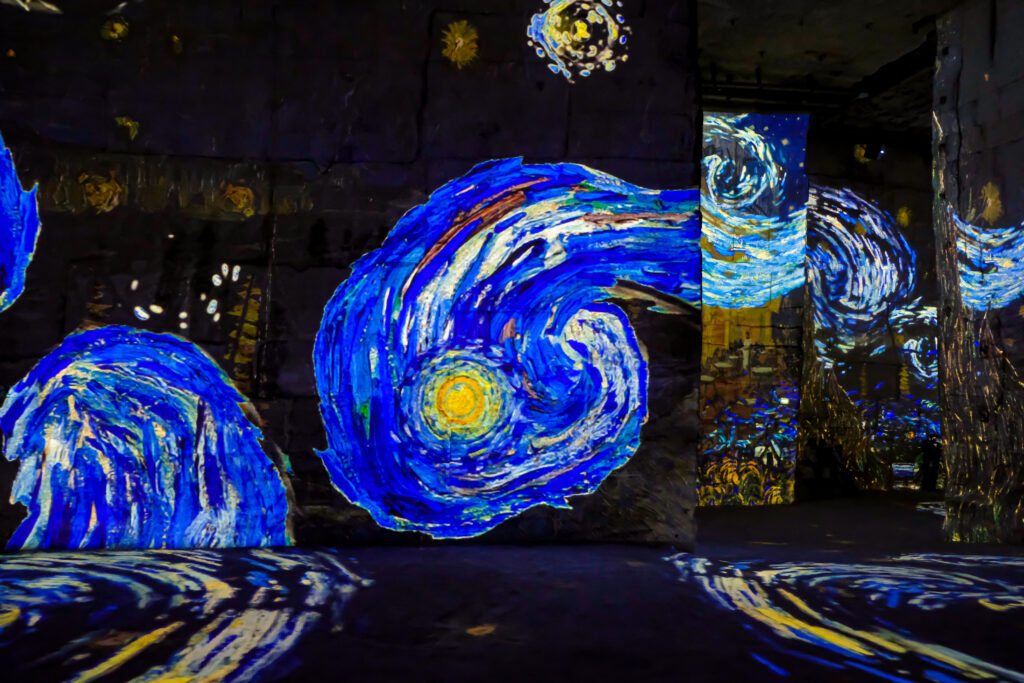
The Carrières de Lumières are amust-see when vacationing in the charming village of Les Baux-de-Provence. They are monumental limestone quarries located in the Val d'Enfer. Famous for having served as the setting for Jean Cocteau's film "Le testament d'Orphée", they are now home to a series of immersive exhibitions. Combining sound and light, each event immerses visitors in the work of major figures in modern and contemporary painting. Representations of masterpieces are projected onto the quarry's walls, pillars and floors.
Click here to book your Carrières de Lumières ticket!
9. Les Trémaïe et les Gaïe, funerary steles
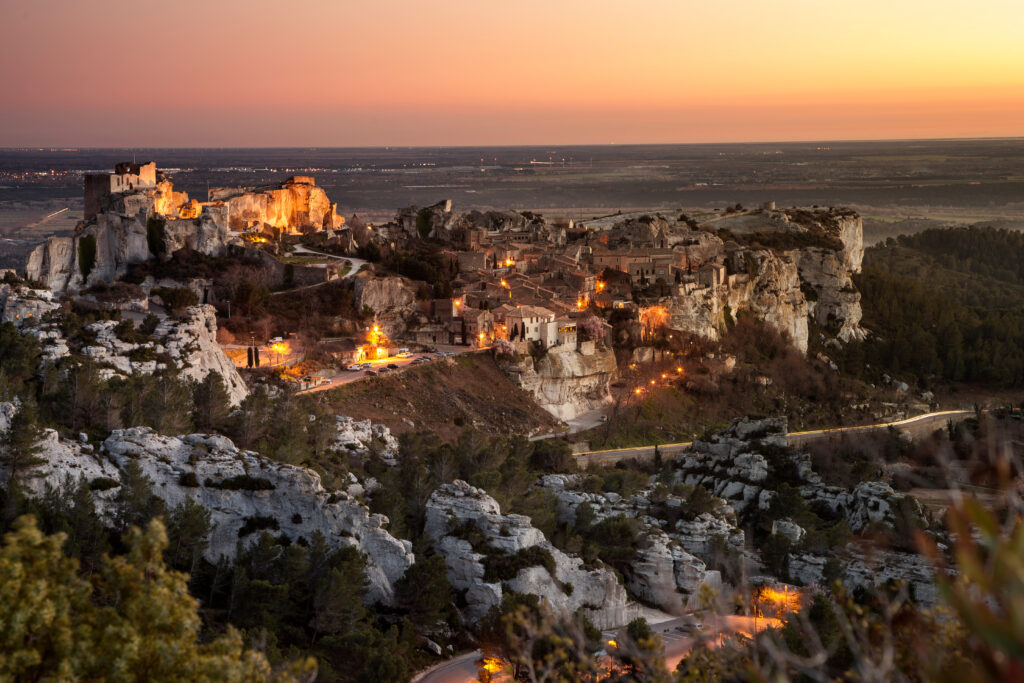
Les Baux-de-Provence never ceases to reveal its treasures. Take the time to examine each monument and stone. The "Trémaïe" and "Gaïé" funerary steles stand at the foot of the rocky spur and the Château des Baux. The Gaïe stele depicts two toga-clad figures. An inscription is partially visible at the bottom. The Trémaïe stele is a tribute to the Three Maries: Jacobé, Salomé and Sarah. Yet another discovery sure to appeal to lovers of fine stonework.
10. What to visit in Les Baux-de-Provence? The Fondation Louis Jou, a fascinating museum

In 1939, typographer, printer, engraver, publisher and painter Loui Jou set up his studio in the restored Hôtel Renaissance Jean de Brion. Today, the building has become a museum dedicated to his work and collections. Visitors will discover books, incunabula and 82 copper engravings created between 1810 and 1815 by Francisco de Goya. The Louis Jou Foundation workshop takes us right to the heart of the technical side of his work. An immersion in the work and life of a personality who exerted a major influence on the book as we know it today.
11. The Alpilles, a hiking paradise
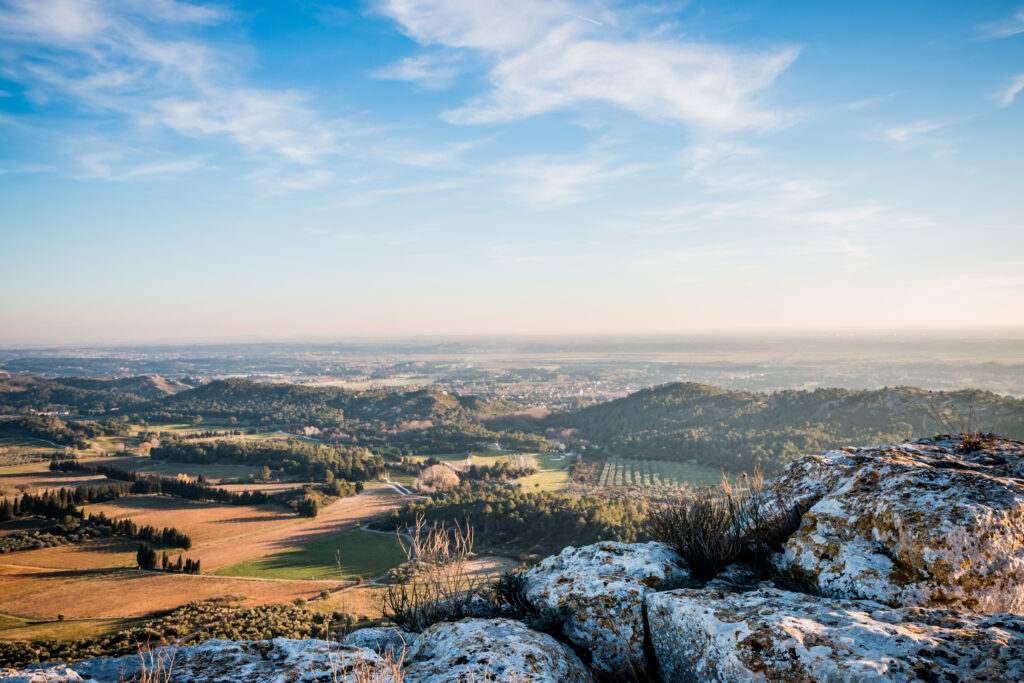
Around the village of Les Baux-de-Provence, the Alpilles Regional Nature Park is a great place to put on your hiking boots and hike under blue skies. Numerous trails criss-cross the massif, leading through garrigues, pine forests, olive groves and vineyards. This is an opportunity to marvel at the local flora and fauna, including 250 species of birds. Along the way, you'll also discover a beautiful built heritage, with washhouses, farmhouses, oratories and chapels. The Alpilles Regional Nature Park can also be explored by 4x4, mountain bike or horseback. Click here to book your 4x4 tour of the Alpilles Regional Park, taking in picturesque villages, Roman ruins, olive groves and vineyards.
Where to stay in Les Baux-de-Provence?
Les Baux-de-Provence and the surrounding area attract many travelers, who come to marvel at some of the most beautiful scenery in the south of France. A number of establishments offer accommodation in typical surroundings.
- Benvengudo, for a unique experience
This 4-star hotel has all the ingredients for a dream stay, and you can book it right here . This renovated traditional farmhouse offers warmly decorated rooms and suites. A restaurant offers cuisine with a taste of Provence, made with local produce. The swimming pool is superb for relaxing after a day's walking.
- Le Mas de l'Oulivié, for its ecological credentials
This sublime mas, bookable right here , is surrounded by a garden of olive trees, cypresses, lavender and rosemary. The rooms are beautifully decorated and offer a high level of comfort. Mas de l'Oulivié also boasts a restaurant and a superb rock pool. We also appreciate the owners' ecological approach, with green cleaning products and equipment such as water savers.
- Hôtel Fabian des Baux, with views of the Alpilles mountains
This hotel with a beautiful view of the Alpilles features trendy rooms that make you feel right at home. The swimming pool is perfect for a refreshing swim or sunbathing on the deckchairs. One of the rooms at Hôtel Fabian des Baux can accommodate 1-2 disabled guests. Click here to book your stay!
Which beautiful villages to visit around Les Baux-de-Provence?
You can choose to book this half-day excursion to visit the magnificent Provencal villages of Luberon and Alpilles, which are not lacking in the Alpilles, an authentic and unspoilt massif, . Once you've discovered all the wonders of Les Baux-de-Provence, head to Saint-Rémy de Provence to stroll through its picturesque streets and visit the Greco-Roman archaeological site of Glanum. Eygalières is a small village perched on a hill, with beautiful mansions and carved doors. Restaurants and cafés invite you to take a seat on the terrace, before strolling around the Saint-Sixte chapel. Then there's Fontvielle, with its many historic monuments. It was here that Alphone Daudet wrote "Lettres de mon moulin". Then there's Paradou, the quintessential Provencal village, with its small medieval town and gentle way of life.
Did you enjoy your stay in Les Baux-de-Provence? Discover the 25 most beautiful villages in France!


